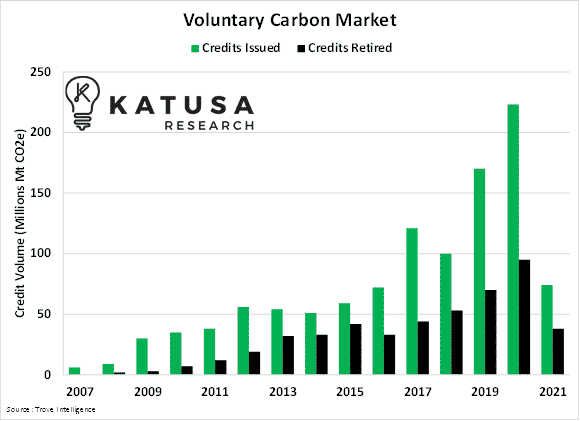Carbon Offset Primer
So what is a Carbon Offset and why do entities buy them?
In recent years, global climate change has driven interest in carbon offsetting as a way to reduce greenhouse gas emissions.
A carbon offset is a way to balance out the carbon emissions you produce by investing in projects that reduce emissions elsewhere.
But what exactly is a carbon offset, and how does it work? In this article, we’ll explore the basics of carbon offsets, how they are created, the types of projects they support, and how investors can get involved.
Buying a carbon offset or credit is the right thing to do for the planet. Offsets do not simply kick the global warming can down the road: They create a way to buy their way into the problem, not out of it.
Offsets can trade in the compliance markets (like those from the Clean Development Mechanism or Joint Implementation projects). However, the majority are traded in the voluntary markets.
Carbon offsets can also have co-benefits such as job creation, water conservation, flood prevention and preservation of biodiversity.
Below is a chart which shows the annual credit generation from carbon offset projects in the voluntary carbon market. In 2020, annual credit production in the voluntary carbon market was a record 223 million.

How Offsets are Created
Carbon offsets are created through the development of projects that reduce greenhouse gas emissions or remove carbon from the atmosphere.
One of the most common ways to create carbon offsets is to support renewable energy projects such as wind or solar power.
When you invest in these projects, you are helping to reduce the amount of greenhouse gases released into the atmosphere, which in turn can help to mitigate climate change.
Other carbon offset projects might include reforestation efforts, methane capture from landfills, or energy efficiency improvements.
A portion of offset spending also goes toward investing in futuristic technology for carbon sequestration and emissions mitigation. Many methods of carbon offset creation, like direct air capture, are in the very incipient stages of development. Increasing demand for those novel offset types enables large-scale deployment, rapidly making them more economical.
Eventually, new technologies will reach a tipping point. For example, Prometheus’s forges are expected to remove 11 GT of CO2 from the air each year by 2050.
- That’s the equivalent of 20% of current emissions, all from a single company.
And it’s only possible with heavy, ongoing investment in carbon credits and offsets—even “risky” ones.
Types of Carbon Offset Projects
Carbon offset projects are grouped into 2 categories:
- Avoidance/Reduction projects like renewable energy (wind, solar) and methane capture
- Removal/Sequestration Projects like reforestation and direct carbon capture
The physical cost of offsetting incentivizes the companies to identify operational “leaks”—areas where emissions can be reduced or eliminated—then begins to force the company to eliminate emissions throughout their entire value chain.
Companies that use offsets at least in part to manage their emissions implement emissions reductions at a higher rate, spend almost five times as much on reductions, and mitigate or eliminate a greater proportion of their emissions as those that do not use offsets.
Investing in offsets also helps the earth through the offsets themselves. Reforestation increases biodiversity, and the installation of solar panels and wind turbines pulls energy demand away from coal and fossil fuel supplies.
A carbon offset can be resold multiple times but once retired, it can no longer be resold. To ensure there is no double-sale, a carbon offset must be kept on a registry. This registry keeps track of the issuance and retirement of offsets.
Carbon Offsets Investing
Investing in carbon offsets can be a way to both reduce your carbon footprint and support sustainable development around the world.
When you invest in a carbon offset project, you are essentially purchasing a credit that represents the amount of greenhouse gas emissions that have been reduced or removed.
These credits can then be sold or traded on carbon markets, or used to offset the emissions of a particular activity (like air travel or shipping). The price of carbon offsets can vary depending on the type of project and the structure of the market, but in general, they are a cost-effective way to support climate action.
Investing in carbon offsets—whether for better financing terms or to help prevent further climate change—encourages competitors in the marketplace to do the same.
Etsy, the online market for handcrafted goods, purchased high-quality carbon offsets for all of its competitors for a single day, and committed to offsetting its own carbon footprint in the future. It calculated the total cost of doing so at just a penny per package, proving that it’s an expense every other retailer can afford to bear.
- Demonstrating the economic feasibility of emissions mitigation encourages other companies to do it, even if it’s for a reason other than saving the planet.
In fact, it may be a combination of all of these reasons and more: creating a more resilient supply chain, improving supplier relationships, and increasing employee retention are all co-benefits of purchasing carbon credits and carbon offsets, ensuring your company can thrive forever.

